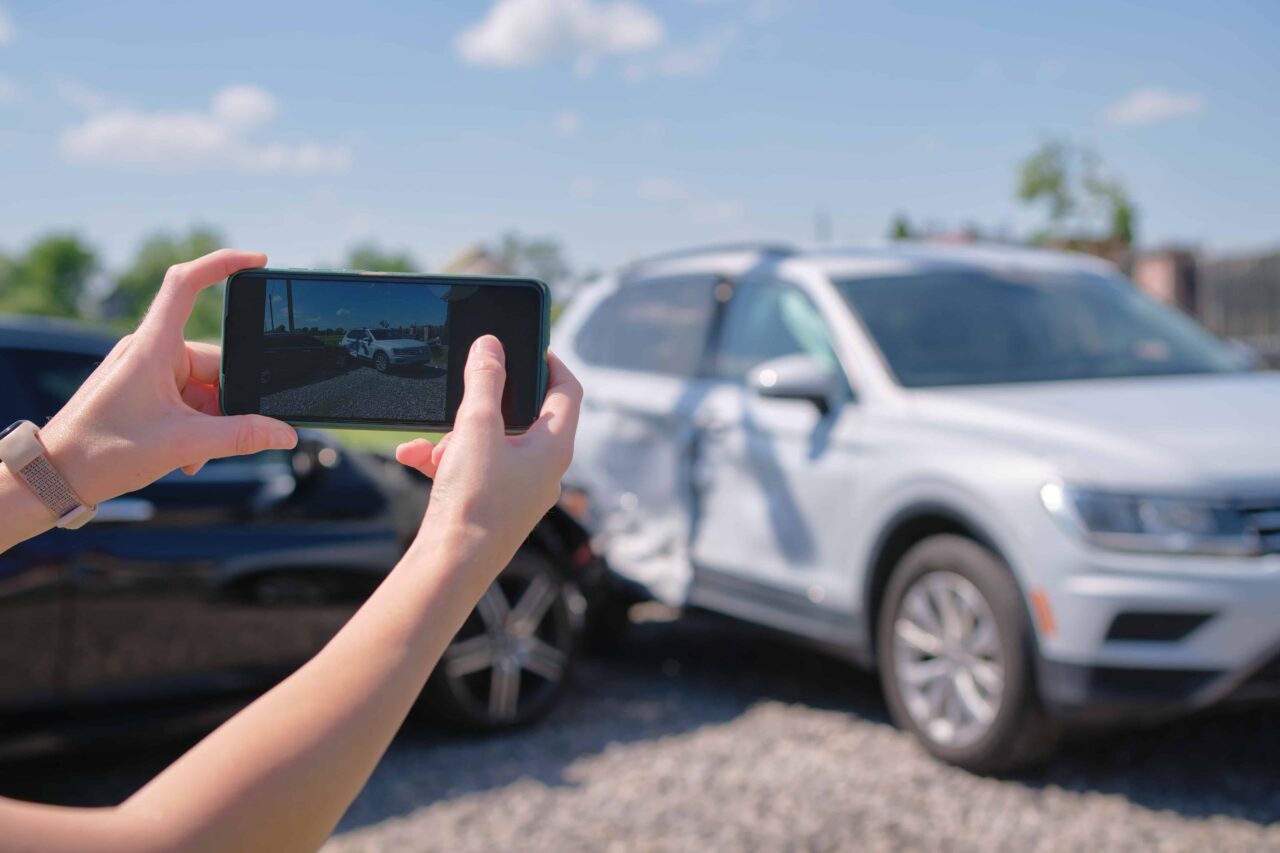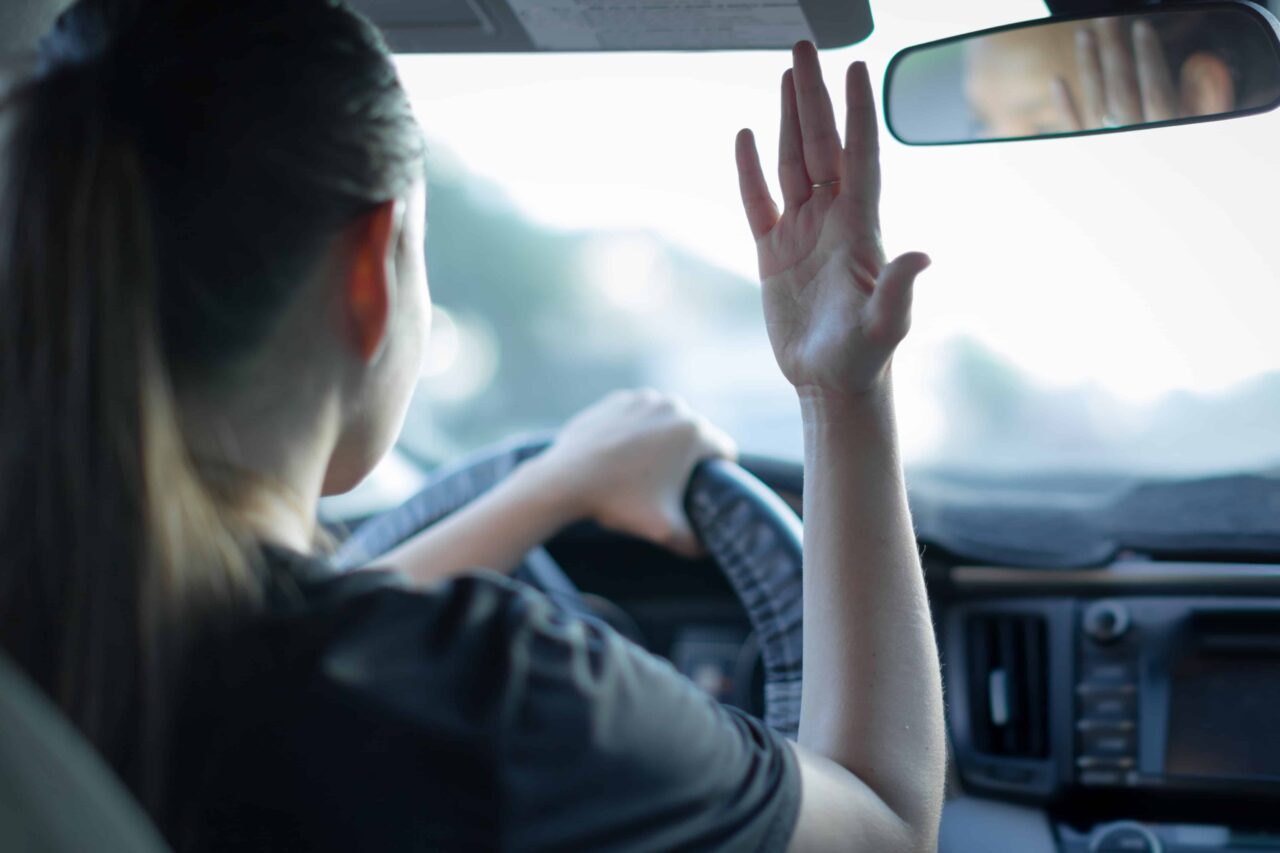In Texas, reckless driving is a specific criminal offense defined as operating a vehicle with "willful or wanton disregard for the safety of persons or property." This means the driver wasn't just careless, they knew their actions were dangerous and chose to do them anyway.
Proving this "willful or wanton" mindset requires more than just showing the driver made a mistake. It involves gathering specific evidence to build a clear picture of their conscious indifference to the safety of others on the road. The goal is to secure fair compensation for your injuries and losses.
If you have questions about a crash involving a dangerously driven vehicle, call AP Law Group for a straightforward conversation about your situation at (713) 913-4627.
The Legal Definition: What Does "Willful or Wanton Disregard" Actually Mean?
After a crash, you know the other driver was doing something dangerous, but you're not sure if it legally qualifies as "reckless." You saw the behavior, and it felt far beyond a simple error, but putting a legal label on it is another matter entirely.
Insurance companies typically try to frame these incidents as simple negligence or a common mistake. They do this because their business model must balance paying claims with remaining profitable. Without a clear understanding of the law, it's difficult to counter their arguments that what happened was just an "accident" in the truest sense, rather than the predictable result of dangerous choices.
"Willful" Disregard
This points to intentional action. The driver made a conscious choice to perform a dangerous maneuver. It's not about intending to cause a crash, but intending to perform the act that led to it. For example, a driver willfully chooses to weave through heavy traffic at 90 mph. They are deliberately performing an action they know is against the law and inherently unsafe.
"Wanton" Disregard
This describes an extreme indifference to the consequences. The driver may not have intended the specific harm that resulted, but their behavior showed a complete lack of concern for the very high risk they were creating for everyone else. It’s a conscious and deliberate act of indifference to the potential harm that could unfold.
What Are Some Common Examples of What Is Considered Reckless Driving?
Certain behaviors frequently meet the legal standard for reckless driving. These actions go far beyond a momentary lapse in judgment:
- Excessive Speed: This refers to speeds that are grossly unsafe for the conditions. Speeding was a contributing factor in nearly 29% of all U.S. traffic fatalities in a recent year.
- Street Racing or "Takeovers": These organized and highly dangerous events are a clear example of willful and wanton disregard for public safety. In recent years, Texas has bolstered its crackdown on illegal street racing and takeovers.
- Fleeing from Law Enforcement: Attempting to evade police in a vehicle is an automatic indicator of reckless driving, as it almost always involves high speeds and dangerous maneuvers.
- Aggressively Weaving In and Out of Lanes: Rapidly changing lanes, cutting off other drivers, and failing to signal in heavy traffic rises to the level of recklessness.
- Ignoring Traffic Signals or Signs: Deliberately running multiple red lights or stop signs demonstrates a conscious decision to ignore established safety rules and endanger others.
How Does Proving Reckless Driving Affect Your Injury Claim?

You might think that as long as the other driver is found at-fault, the details of their driving behavior don't matter. But establishing that their actions were reckless, not just negligent, significantly changes the foundation of your personal injury claim.
It Strengthens Your Argument Against Shared Fault
After any accident, the other driver's insurance company will conduct a thorough investigation. A primary goal of this investigation is to find any evidence suggesting you might share some of the blame for the collision. In Texas, if you are found to be partially at fault, the amount of compensation you recover is reduced by your percentage of fault. If you're found to be 51% or more at fault, you recover nothing.
When the other driver's conduct was "willful or wanton," it becomes much harder for them to successfully argue that your minor mistake, like braking a second too late or not signaling a lane change far enough in advance, contributed to the crash in a meaningful way. Their extreme behavior overshadows other minor factors and makes it difficult to shift blame onto you.
It Influences the Value of Your Claim
While most car accident claims are based on negligence, a finding of reckless driving establishes a much higher degree of blameworthiness. This clear and dangerous disregard for safety is a significant factor when negotiating with the insurance company for full compensation covering your medical bills, lost income, and the pain and suffering you have endured.
It May Open the Door to Punitive Damages
In some cases, Texas law allows for an additional category of compensation called "punitive" or "exemplary" damages. These are not meant to repay you for a specific loss, like a medical bill. Instead, their purpose is to punish the wrongdoer for a particularly dangerous behavior and to discourage others in the community from acting in a similar way.
A showing of "gross negligence", which involves an act or omission with an extreme degree of risk that the actor is aware of, is required to pursue these damages. This legal standard frequently overlaps with the "willful or wanton" standard of reckless driving. We will analyze the facts of your crash to determine if the at-fault driver's conduct meets this high standard and determine whether to pursue punitive damages.
What Kind of Evidence Helps Show a Driver Was Reckless?

Proving a driver’s state of mind, that they acted with "willful or wanton disregard", is about relying on building a case from external, objective evidence that, when pieced together, tells a clear story of their choices.
Here are the types of evidence we look for to build a strong reckless driving claim:
- The Police Report: This is the starting point. We immediately look for any citations issued for reckless driving or other serious violations like excessive speeding. The officer's narrative notes are also important, as they may describe the driver's behavior, statements made at the scene, or the physical evidence that suggested dangerous actions.
- Eyewitness Testimony: Other drivers who saw the behavior before the crash are invaluable. Did they witness the driver racing another car for miles? Were they tailgated aggressively or cut off? Testimony from people who saw a pattern of dangerous driving leading up to the collision is powerful. We work to identify and contact these individuals to get their account of events.
- Video Footage: Cameras are everywhere, and they provide undeniable proof of reckless behavior. We seek footage from multiple sources:
- Dash Cams: Your own camera or footage from other nearby vehicles captures the entire incident.
- Traffic Cameras: We submit formal requests for footage from city or state cameras overlooking the intersection or stretch of road where the accident occurred.
- Doorbell and Security Cameras: Homes and businesses near the crash site may have security systems that recorded the moments before, during, or after the impact.
- The Driver's Own Actions and Words: What a driver says and does immediately after a crash is very revealing. Did they admit to speeding, racing, or being distracted? Were they confrontational, aggressive, or dismissive of the damage they caused? These statements are sometimes used to help show their state of mind and disregard for safety.
- Physical Evidence from the Scene: The laws of physics don't lie. Accident reconstructionists analyze physical evidence to paint a picture of what happened. Extremely long skid marks, the specific location and severity of vehicle damage, and the final resting positions of the cars help prove factors like excessive speed or aggressive, last-second maneuvers.
- Electronic Data: Most modern cars contain an "event data recorder" (EDR), which functions like an airplane's black box. This device records data in the few seconds before a crash, such as speed, braking, steering inputs, and throttle position. We take the necessary legal steps to ensure this data is preserved and obtained from the at-fault vehicle before it is erased or the vehicle is destroyed.
Reckless Driving vs. Negligence vs. Aggressive Driving: What's the Difference?

In everyday conversation, people use terms like "negligent," "aggressive," and "reckless" interchangeably to describe bad driving. However, in a legal context, these words have very different and specific meanings.
Negligence (A Mistake)
This is the legal basis for most car accident claims. Negligence is defined as a failure to use reasonable care, like doing something a reasonably careful person would not do, or failing to do something a reasonably careful person would do under similar circumstances. The key here is that the driver didn't intend to cause harm, but their mistake led to it.
Example: A driver looks down for a moment to change the radio station and, in that brief period of inattention, drifts into another lane, causing a collision.
Aggressive Driving (A Pattern of Behavior)
This is more of a behavioral description than a specific legal charge in Texas. Aggressive driving involves a series of deliberate actions that intimidate or endanger others, such as tailgating closely, flashing high beams, making rude gestures, or weaving through traffic. It shows intent and frustration, but it may not always meet the high bar for a criminal charge.
Connection to Reckless Driving: While "aggressive driving" isn't a standalone charge itself, these very actions are the exact evidence used to prove a reckless driving charge. A pattern of aggressive acts demonstrates the driver's "willful or wanton disregard" for safety.
Reckless Driving (A Conscious Disregard)
This is where the behavior crosses the line from a mistake to a knowing disregard of a high and obvious risk. The driver is aware of the danger their actions create for others but proceeds anyway. It is this conscious choice to ignore a known risk that sets it apart from simple negligence.
Example: The same driver who drifted while changing the radio is negligent. By contrast, a driver who weaves between cars at 100 mph on a busy Houston freeway is reckless. They are fully aware of the high potential for a catastrophic accident and ignore it completely.
Frequently Asked Questions About Reckless Driving Claims
Can a driver be charged with reckless driving even if no one was hurt?
Yes. Reckless driving is a criminal offense based on the driver's actions alone, regardless of the outcome. The law punishes the dangerous behavior itself. However, if someone is injured as a result of those actions, the criminal penalties typically become much more severe, and it also forms the basis for a civil personal injury claim.
If the other driver gets a reckless driving ticket, does that automatically win my injury case?
It is very strong evidence in your favor, but it does not guarantee a win. The insurance company for the at-fault driver may still try to argue about the extent of your injuries or claim you were partially at fault for the accident to reduce their payout. The ticket is a piece of the puzzle that establishes a strong presumption of fault, but it is not the whole solution.
What is the time limit for filing an injury claim after a reckless driving accident in Texas?
In Texas, you generally have two years from the date of the accident to file a personal injury lawsuit. This deadline is known as the statute of limitations. While two years may seem like a long time, it is always best to act much sooner. Evidence like video footage and witness memories disappears quickly.
My accident happened on a federal highway like I-45 in Houston. Does that change anything?
Possibly. While Texas law applies to most roads, an accident that occurs on certain federal properties sometimes falls under federal law, which has its own definitions and penalties for reckless driving.
For example, 32 CFR 263.6 governs driving on certain federal sites. Our firm handles cases that occur on all roads in and around Houston, and we address the specific jurisdictional rules that apply to your case.
Let Our Experience Be Your Guide
When you've been hurt by a driver who treated public roads like their personal racetrack, you deserve answers and a clear path forward. Our Houston car accident lawyers handle cases throughout the city and surrounding communities. We are familiar with the courts, the legal process, and the challenges people face after a serious crash.
If you are ready to discuss what happened, we are here to listen. Call AP Law Group today at (713) 913-4627 for a no-cost consultation.